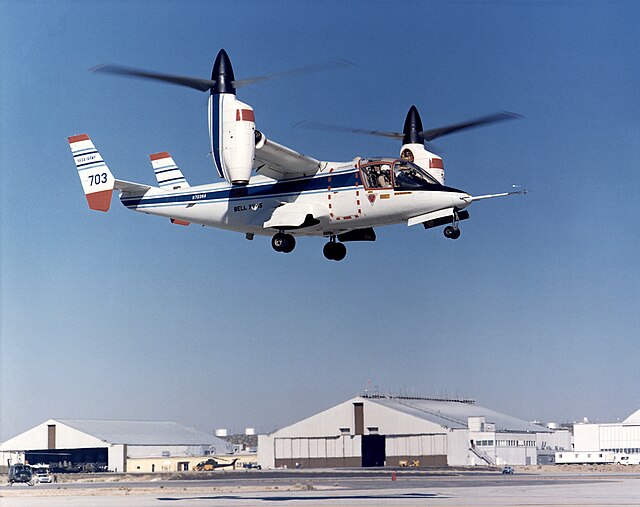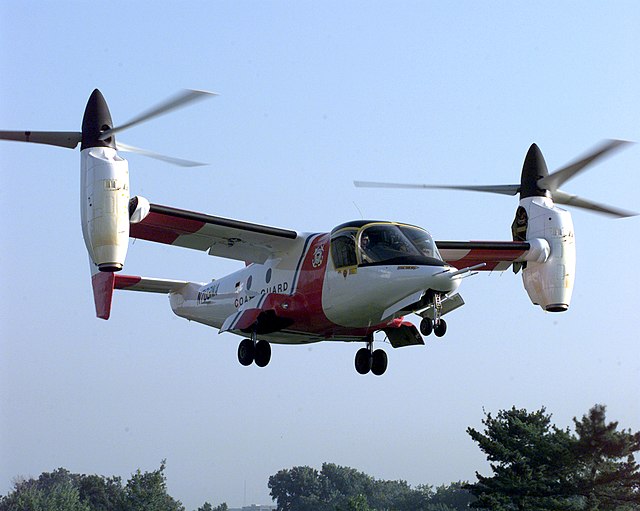The Bell Boeing V-22 Osprey is an American multi-mission, tiltrotor military aircraft with both vertical takeoff and landing (VTOL) and short takeoff and landing (STOL) capabilities. It is designed to combine the functionality of a conventional helicopter with the long-range, high-speed cruise performance of a turboprop aircraft. The V-22 is operated by the United States and Japan, and is not only a new aircraft design, but a new type of aircraft that entered service in the 2000s, a tiltrotor compared to fixed wing and helicopter designs. The V-22 first flew in 1988 and after a long development was fielded in 2007. The design essentially combines the vertical takeoff ability of a helicopter, but the range of a fixed-wing airplane.
Bell Boeing V-22 Osprey
XV-15 experimental tiltrotor, 1980
Early concept illustrations of V-22
A V-22 during tests in 2003
A tiltrotor is an aircraft that generates lift and propulsion by way of one or more powered rotors mounted on rotating shafts or nacelles usually at the ends of a fixed wing. Almost all tiltrotors use a transverse rotor design, with a few exceptions that use other multirotor layouts.
The Bell Boeing V-22 Osprey
Transcendental Model 1-G hovering
Bell X-22
A Bell XV-15 prepares to land








